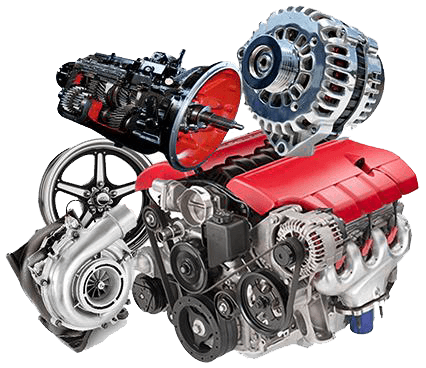Update Your Automobile with a New Opel Corsa Engine
Update Your Automobile with a New Opel Corsa Engine
Blog Article
Checking Out the Inner Functions of a Compact Car's Engine System
As chauffeurs, we frequently take for provided the elaborate procedures that occur within the boundaries of our vehicle's engine system. In this expedition of a compact automobile's engine system, we will decipher the internal workings of this mechanical symphony, losing light on the secrets that drive us onward on our daily trips.
Burning Process Introduction
The burning process in a small lorry's engine system is a vital device that efficiently converts gas into energy to power the car. This procedure happens within the burning chamber of the engine, where gas and air mix, fire up, and produce controlled surges. The combustion process includes 4 major phases: intake, power, exhaust, and compression.
Throughout the consumption stage, the piston moves downward, reeling in a mixture of air and gas into the burning chamber. The next phase, compression, includes the piston moving upwards, compressing the air-fuel mixture to raise its potency. Ultimately, in the power stage, the ignition system sparks the pressed mixture, causing a fast development of gases that forces the piston pull back. This descending movement produces the power needed to drive the automobile. Finally, in the exhaust stage, the scorched gases are removed from the burning chamber with the exhaust valve, preparing the chamber for the next cycle. This cyclic burning procedure is essential to the procedure of a compact car's engine system, ensuring effective energy conversion for propulsion.
Piston and Cylinder Interaction

The piston's accurate fit within the cylinder is vital for preserving ideal compression and stopping power loss throughout burning. Limited clearances between the piston and cyndrical tube walls ensure efficient securing, enabling the piston to move smoothly without enabling gases to leak past. Proper lubrication is also vital to reduce rubbing and put on in between these parts, boosting long life and efficiency.
Additionally, the style and materials made use of in producing the piston and cyndrical tube effect engine effectiveness and resilience. Modern engines frequently employ light-weight yet sturdy materials like aluminum alloys for pistons and cyndrical tube linings to lower inertia and improve thermal efficiency. Overall, Full Article the unified interaction in between the piston and cylinder is fundamental to the engine's capability and general performance.
Fuel Shot System Performance
Fuel injection systems in portable lorry engines play a crucial role in precisely providing fuel to the combustion chamber for regulated and efficient ignition. The gas injection system operates by injecting fuel into the burning chamber at the ideal minute during the engine's procedure (opel corsa engine). This exact timing ensures that the fuel blends equally with the air for proper burning, resulting in boosted fuel effectiveness and decreased exhausts
There are mainly 2 kinds of fuel shot systems used in portable vehicle engines: port gas injection (PFI) and direct gas shot (DFI) PFI systems infuse fuel into the consumption port prior to the consumption valve, while DFI systems infuse fuel straight right into the combustion chamber. Both systems have their advantages, with DFI providing far better fuel atomization and PFI supplying an extra affordable solution.
Understanding Engine Cooling Devices
Efficient procedure of a portable automobile's engine depends greatly on the efficiency of its cooling mechanisms. The air conditioning system in a portable lorry typically is composed of a number of elements functioning with each other to control the engine temperature. Understanding these engine air conditioning systems is crucial for maintaining the efficiency and durability of a compact lorry's engine system.

Exhaust System Parts Explained
The ideal functioning of a portable automobile's engine cooling mechanisms relies on a complementary system referred to as the exhaust system, which consists of numerous necessary elements for ensuring reliable exhausts and engine efficiency. The exhaust system includes parts such as the exhaust manifold, catalytic converter, muffler, and tailpipe. The exhaust manifold gathers exhaust gases from the engine's paths and cylinders them to the catalytic converter. The catalytic converter after that converts unsafe contaminants in the exhaust right into less harmful discharges before launching them through the muffler and tailpipe.
One vital component of the exhaust system is the oxygen sensor, which keeps an eye on the oxygen degrees in the exhaust gases to help control gas consumption and make sure optimal engine performance. opel corsa engine. In addition, the resonator might be existing in some exhaust systems to decrease sound degrees. Overall, the exhaust system plays an important duty in maintaining engine effectiveness, minimizing harmful emissions, and making sure a quieter driving experience for portable lorry owners

Conclusion
Finally, the portable lorry's engine system is a complex combination of parts that collaborate to help with the burning process, transform fuel right into power, and expel waste gases. Understanding the internal functions of the engine system, including the piston the original source and cylinder interaction, gas shot system, engine air conditioning devices, and exhaust system elements, is click to investigate crucial for preserving ideal efficiency and performance of the lorry.
The burning procedure in a compact automobile's engine system is an important device that successfully transforms gas right into power to power the lorry.Gas shot systems in small lorry engines play a critical role in precisely delivering gas to the burning chamber for regulated and effective ignition.There are mainly two types of fuel injection systems utilized in small car engines: port fuel shot (PFI) and straight gas shot (DFI) Recognizing these engine air conditioning devices is crucial for preserving the performance and longevity of a portable lorry's engine system.
The ideal functioning of a portable car's engine air conditioning devices depends on a complementary system recognized as the exhaust system, which consists of various essential components for ensuring reliable discharges and engine efficiency.
Report this page